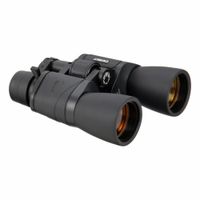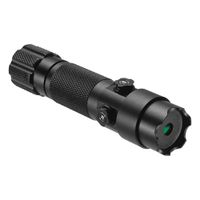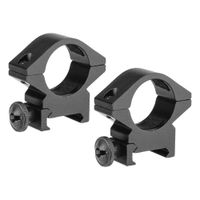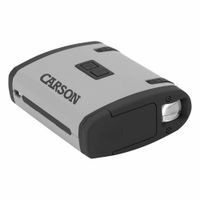Call +(254) 703 030 000 / 751 483 999 / 721 704 777
- Home
- Security
- Military Tactical Public Security Equipment
- Binoculars Scopes Thermal Imaging Night Vision Devices
.....Read More
Frequently Asked Questions
What are the best binoculars for long-distance viewing?
The best binoculars for long-distance viewing typically offer a combination of high magnification, large objective lenses, superior optical quality, and robust build. Here are some top choices:
1. **Nikon Monarch 5 20x56**: Known for its excellent light transmission and sharp image quality, the Monarch 5 offers 20x magnification and 56mm objective lenses. It features ED (Extra-low Dispersion) glass for clearer images and a durable, waterproof, and fog-proof design.
2. **Vortex Optics Viper HD 15x50**: This model provides a balance of high magnification and portability. The HD (High Density) extra-low dispersion glass ensures impressive resolution and color fidelity. It is also rugged, with a rubber-armored coating for a secure grip.
3. **Celestron SkyMaster 25x70**: Ideal for both terrestrial and astronomical viewing, the SkyMaster offers 25x magnification and large 70mm objective lenses. It is known for its affordability and good performance in low-light conditions.
4. **Zeiss Conquest HD 15x56**: Zeiss is renowned for its premium optics, and the Conquest HD is no exception. It offers 15x magnification with 56mm lenses, providing bright, high-contrast images. The LotuTec coating ensures clear views in adverse weather.
5. **Swarovski Optik SLC 15x56**: A high-end option, the SLC series is known for its exceptional optical performance and durability. It features high-definition optics, a wide field of view, and a comfortable ergonomic design.
When choosing binoculars for long-distance viewing, consider factors like weight, ease of use, and whether you need features like image stabilization or tripod adaptability. Each of these models offers a unique set of features catering to different needs and budgets.
How does thermal imaging work in low-light conditions?
Thermal imaging works in low-light conditions by detecting infrared radiation, which is emitted by all objects based on their temperature. Unlike visible light, infrared radiation is not dependent on external light sources, making thermal imaging effective in complete darkness or low-light environments.
Thermal cameras are equipped with sensors that detect infrared radiation and convert it into an electronic signal. This signal is then processed to create a visual representation, known as a thermogram, which displays temperature variations across the observed scene. Warmer objects emit more infrared radiation and appear brighter in the thermogram, while cooler objects emit less and appear darker.
The key component of a thermal imaging device is the microbolometer, a type of sensor that measures the intensity of infrared radiation. These sensors are sensitive to a range of infrared wavelengths, typically from 8 to 14 micrometers, which is optimal for detecting heat emitted by most objects in everyday environments.
Thermal imaging is particularly useful in low-light conditions because it does not rely on ambient light. Instead, it captures the heat signatures of objects, allowing users to see through smoke, fog, and other obscurants that would hinder visibility in the visible spectrum. This capability makes thermal imaging valuable for various applications, including surveillance, search and rescue, firefighting, and wildlife observation.
In summary, thermal imaging operates effectively in low-light conditions by detecting and visualizing the infrared radiation emitted by objects, independent of visible light, thus providing clear images based on temperature differences.
What is the difference between night vision and thermal imaging?
Night vision and thermal imaging are both technologies used to see in low-light or no-light conditions, but they operate on different principles and have distinct applications.
Night vision technology amplifies existing light. It uses image intensification to collect and amplify visible light, including near-infrared light, to create a visible image. Night vision devices typically require some ambient light, such as moonlight or starlight, to function effectively. They produce images in shades of green, which is easier for the human eye to interpret in low-light conditions. Night vision is commonly used in military operations, wildlife observation, and surveillance.
Thermal imaging, on the other hand, detects heat emitted by objects. It captures the infrared radiation (heat) emitted by all objects above absolute zero and converts it into an image. Thermal imaging does not rely on visible light and can function in complete darkness, as well as through smoke, fog, and other obscurants. The images produced are typically in shades of gray or color-coded to represent different temperatures. Thermal imaging is widely used in search and rescue operations, firefighting, building inspections, and medical diagnostics.
In summary, night vision amplifies existing light to create an image, while thermal imaging detects heat to produce an image. Night vision is dependent on some level of ambient light, whereas thermal imaging can operate in total darkness and through various obscurants. Each technology has its own advantages and is suited to different applications based on the specific requirements of the task at hand.
How do I choose the right rifle scope for my needs?
1. **Purpose**: Determine the primary use (hunting, target shooting, tactical). Different activities require different features.
2. **Magnification**: Choose based on distance. For short-range (under 100 yards), 1-4x is sufficient. Medium-range (100-300 yards) benefits from 4-9x. Long-range (over 300 yards) may require 9-12x or higher.
3. **Objective Lens Size**: Larger lenses (40-50mm) gather more light, improving visibility in low-light conditions but add weight. Balance size with portability.
4. **Reticle Type**: Select based on preference and use. Duplex is versatile, Mil-Dot is for range estimation, and BDC (Bullet Drop Compensator) is for long-range shooting.
5. **Lens Coating**: Fully multi-coated lenses offer better light transmission and clarity. Consider coatings for anti-glare and scratch resistance.
6. **Durability**: Ensure the scope is waterproof, fog-proof, and shockproof, especially for rugged environments.
7. **Eye Relief**: Longer eye relief (3-4 inches) is crucial for high-recoil rifles to prevent injury.
8. **Tube Size**: Common sizes are 1-inch and 30mm. Larger tubes offer more adjustment range and durability but may require specific mounts.
9. **Adjustment Turrets**: Look for precise, easy-to-use turrets. Target turrets are for precision shooting, while capped turrets are better for hunting.
10. **Parallax Adjustment**: Important for long-range accuracy. Scopes with adjustable parallax are preferred for distances over 150 yards.
11. **Budget**: Balance features with cost. Higher-end scopes offer better optics and durability but assess if they meet your needs.
12. **Brand Reputation**: Consider reputable brands known for quality and customer service.
13. **Try Before Buying**: If possible, test scopes in-store to assess clarity, weight, and ease of use.
What are the advantages of using a monocular over binoculars?
Monoculars offer several advantages over binoculars, particularly in terms of portability, weight, and cost. Firstly, monoculars are generally more compact and lightweight, making them easier to carry and handle, especially for activities like hiking, birdwatching, or traveling. This compactness allows for quick and convenient access, as they can easily fit into a pocket or small bag.
Secondly, monoculars are typically more affordable than binoculars of similar optical quality. This cost-effectiveness makes them an attractive option for those who need a reliable optical device without a significant financial investment. Additionally, the simpler design of monoculars often results in fewer mechanical parts, which can translate to increased durability and less maintenance.
Monoculars also offer a practical advantage in situations where one-handed use is necessary. This can be particularly beneficial for individuals who need to multitask or for those with limited mobility in one hand. The single-eye viewing system of a monocular can also be advantageous for people with vision discrepancies between their eyes, as it eliminates the need to adjust for differences in vision.
Furthermore, monoculars can provide a wider field of view compared to binoculars with similar magnification, which can be beneficial for scanning large areas quickly. They are also often equipped with features like night vision or thermal imaging, making them versatile tools for various applications, including wildlife observation and security.
In summary, the advantages of using a monocular over binoculars include greater portability, lower cost, ease of use, and versatility, making them a practical choice for many users.
How do laser sights improve shooting accuracy?
Laser sights improve shooting accuracy by providing a visual aid that aligns with the point of impact, allowing shooters to quickly and accurately aim their firearm. They project a laser beam onto the target, creating a visible dot that indicates where the bullet is likely to hit. This immediate feedback helps shooters adjust their aim without needing to rely solely on traditional iron sights or scopes, which can be slower to align.
Laser sights are particularly beneficial in low-light conditions where traditional sights may be difficult to see. They enhance target acquisition speed, allowing shooters to engage targets more rapidly. This is especially useful in dynamic shooting scenarios or self-defense situations where quick reaction times are crucial.
Additionally, laser sights can help improve shooting accuracy by allowing shooters to maintain focus on the target rather than shifting their gaze back and forth between the target and the sights. This continuous focus can lead to more consistent and accurate shooting.
For beginners, laser sights can serve as a training tool, helping them understand the relationship between sight alignment and point of impact. They provide immediate visual feedback on how slight changes in grip, stance, or trigger pull can affect accuracy, facilitating faster learning and skill development.
However, reliance on laser sights should be balanced with proficiency in using traditional sights, as lasers can fail or be less effective in bright conditions. Overall, laser sights enhance shooting accuracy by improving aim, increasing speed, and providing valuable feedback, making them a valuable tool for both novice and experienced shooters.
What are the key features to look for in a night vision device?
When selecting a night vision device, consider the following key features:
1. **Generation**: Night vision devices are categorized into generations (Gen 1, Gen 2, Gen 3, and Gen 4). Higher generations offer better image quality, longer range, and improved performance in low-light conditions.
2. **Resolution**: Measured in line pairs per millimeter (lp/mm), higher resolution provides clearer and more detailed images.
3. **Range**: The effective viewing distance is crucial. Consider the device's range for detection, recognition, and identification.
4. **Field of View (FOV)**: A wider FOV allows you to see more of the surrounding area, which is beneficial for situational awareness.
5. **Magnification**: Depending on your needs, choose between fixed or variable magnification. Higher magnification can reduce FOV and image brightness.
6. **Infrared Illuminator**: Built-in or attachable IR illuminators enhance visibility in complete darkness by emitting infrared light.
7. **Durability**: Look for devices with robust construction, water resistance, and shockproof features for use in harsh environments.
8. **Battery Life**: Longer battery life ensures extended use without frequent replacements. Consider devices with energy-efficient designs.
9. **Weight and Size**: Lightweight and compact devices are easier to handle and transport, especially for prolonged use.
10. **Image and Video Recording**: Some devices offer built-in recording capabilities, allowing you to capture and store footage.
11. **Autogating**: This feature protects the device from bright light exposure, prolonging its lifespan and maintaining image quality.
12. **Price**: Balance your budget with the features you need. Higher-end models offer superior performance but at a higher cost.
13. **Compatibility and Mounting Options**: Ensure the device is compatible with helmets, tripods, or other mounting systems if needed.
14. **Warranty and Support**: A good warranty and reliable customer support can be crucial for maintenance and repairs.




